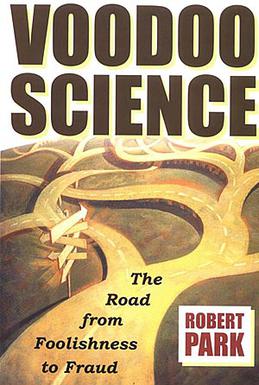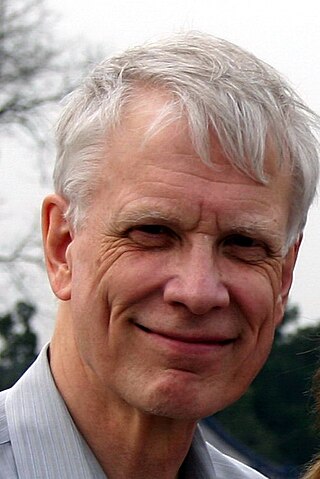
Astrology is a range of divinatory practices, recognized as pseudoscientific since the 18th century, that claim to discern information about human affairs and terrestrial events by studying the apparent positions of celestial objects. Different cultures have employed forms of astrology since at least the 2nd millennium BCE, these practices having originated in calendrical systems used to predict seasonal shifts and to interpret celestial cycles as signs of divine communications. Most, if not all, cultures have attached importance to what they observed in the sky, and some—such as the Hindus, Chinese, and the Maya—developed elaborate systems for predicting terrestrial events from celestial observations. Western astrology, one of the oldest astrological systems still in use, can trace its roots to 19th–17th century BCE Mesopotamia, from where it spread to Ancient Greece, Rome, the Islamic world, and eventually Central and Western Europe. Contemporary Western astrology is often associated with systems of horoscopes that purport to explain aspects of a person's personality and predict significant events in their lives based on the positions of celestial objects; the majority of professional astrologers rely on such systems.

James Randi was a Canadian-American stage magician, author and scientific skeptic who extensively challenged paranormal and pseudoscientific claims. He was the co-founder of the Committee for Skeptical Inquiry (CSI), and founder of the James Randi Educational Foundation (JREF). Randi began his career as a magician under the stage name The Amazing Randi and later chose to devote most of his time to investigating paranormal, occult, and supernatural claims, which he collectively called "woo-woo". Randi retired from practicing magic at age 60, and from his foundation at 87.

A horoscope is an astrological chart or diagram representing the positions of the Sun, Moon, planets, astrological aspects and sensitive angles at the time of an event, such as the moment of a person's birth. The word horoscope is derived from the Greek words ōra and scopos meaning "time" and "observer". It is claimed by proponents of astrology that a horoscope can be used as a method of divination regarding events relating to the point in time it represents, and it forms the basis of the horoscopic traditions of astrology, although practices surrounding astrology have been recognized as pseudoscientific since the 18th century. Horoscope columns are often featured in print and online newspapers.

The Committee for Skeptical Inquiry (CSI), formerly known as the Committee for the Scientific Investigation of Claims of the Paranormal (CSICOP), is a program within the U.S. non-profit organization Center for Inquiry (CFI), which seeks to "promote scientific inquiry, critical investigation, and the use of reason in examining controversial and extraordinary claims." Paul Kurtz proposed the establishment of CSICOP in 1976 as an independent non-profit organization, to counter what he regarded as an uncritical acceptance of, and support for, paranormal claims by both the media and society in general. Its philosophical position is one of scientific skepticism. CSI's fellows have included notable scientists, Nobel laureates, philosophers, psychologists, educators, and authors. It is headquartered in Amherst, New York.
Scientific skepticism or rational skepticism, sometimes referred to as skeptical inquiry, is a position in which one questions the veracity of claims lacking empirical evidence. In practice, the term most commonly references the examination of claims and theories that appear to be beyond mainstream science, rather than the routine discussions and challenges among scientists. Scientific skepticism differs from philosophical skepticism, which questions humans' ability to claim any knowledge about the nature of the world and how they perceive it, and the similar but distinct methodological skepticism, which is a systematic process of being skeptical about the truth of one's beliefs.

Ray Hyman is a Professor Emeritus of Psychology at the University of Oregon in Eugene, Oregon, and a noted critic of parapsychology. Hyman, along with James Randi, Martin Gardner and Paul Kurtz, is one of the founders of the modern skeptical movement. He is the founder and leader of the Skeptic's Toolbox. Hyman serves on the Executive Council for the Committee for Skeptical Inquiry.

Voodoo Science: The Road from Foolishness to Fraud is a book published in 2000 by physics professor Robert L. Park, critical of research that falls short of adhering to the scientific method. Other people have used the term "voodoo science", but amongst academics it is most closely associated with Park. Park offers no explanation as to why he appropriated the word voodoo to describe the four categories detailed below. The book is critical of, among other things, homeopathy, cold fusion and the International Space Station.
Dean Radin investigates phenomena in parapsychology. Following a bachelor and master's degree in electrical engineering and a PhD in educational psychology Radin worked at Bell Labs, as a researcher at Princeton University and the University of Edinburgh, and was a faculty member at University of Nevada, Las Vegas. He then became Chief Scientist at the Institute of Noetic Sciences (IONS) in Petaluma, California, USA, later becoming the president of the Parapsychological Association. He is also co-editor-in-chief of the journal Explore: The Journal of Science and Healing. Radin's ideas and work have been criticized by scientists and philosophers skeptical of paranormal claims. The review of Radin's first book, The Conscious Universe, that appeared in Nature charged that Radin ignored the known hoaxes in the field, made statistical errors and ignored plausible non-paranormal explanations for parapsychological data.

Natal astrology is also known as Genethliacal Astrology, which implies nativity. It is a system of astrology that claims to shed light on an individual’s personality or path in life. This concept is based on constructing a horoscope or natal chart that includes the exact date, time, and location of an individual's birth. Natal astrology is found in the Indian or Jyotisha, Chinese and Western astrological traditions.

Marcello Truzzi was a professor of sociology at New College of Florida and later at Eastern Michigan University, founding co-chairman of the Committee for the Scientific Investigation of Claims of the Paranormal (CSICOP), a founder of the Society for Scientific Exploration, and director for the Center for Scientific Anomalies Research.

The lunar effect is a purported correlation between specific stages of the roughly 29.5-day lunar cycle and behavior and physiological changes in living beings on Earth, including humans. A considerable number of studies have examined the effect on humans. By the late 1980s, there were at least 40 published studies on the purported lunar-lunacy connection, and at least 20 published studies on the purported lunar-birthrate connection. Literature reviews and metanalyses have found no correlation between the lunar cycle and human biology or behavior. In cases such as the approximately monthly cycle of menstruation in humans, the coincidence in timing reflects no known lunar influence. The widespread and persistent beliefs about the influence of the Moon may depend on illusory correlation – the perception of an association that does not in fact exist.

Barry L Beyerstein was a scientific skeptic and professor of psychology at Simon Fraser University in Burnaby, British Columbia. Beyerstein's research explored brain mechanisms of perception and consciousness, the effects of drugs on the brain and mind, sense of smell and its lesser-known contributions to human cognition and emotion. He was founder and chair of the BC Skeptics Society, a Fellow and member of the Executive Council of the Committee for the Scientific Investigation of Claims of the Paranormal (CSICOP), now known as the Committee for Skeptical Inquiry. Associate editor of the Scientific Review of Alternative Medicine Journal as well as a contributor to Skeptical Inquirer, Beyerstein was one of the original faculty of CSICOP's Skeptic's Toolbox. Beyerstein was a co-founder of the Canadians for Rational Health Policy and a member of the advisory board of the Drug Policy Foundation of Washington D.C. He was a founding board member of the Canadian Foundation for Drug Policy and contributed to the International Journal of Drug Policy. According to long-time friend James Alcock, Beyerstein once addressed the House of Commons Standing Committee on Health during discussions leading up to the passage of the Controlled Substances Act". Along with his brother Dale, Barry was active in the British Columbia Civil Liberties Association.

James E. Alcock is a Canadian educator. He has been a Professor of Psychology at York University (Canada) since 1973. Alcock is a noted critic of parapsychology and is a Fellow and Member of the Executive Council for the Committee for Skeptical Inquiry. He is a member of the Editorial Board of The Skeptical Inquirer, and a frequent contributor to the magazine. He has also been a columnist for Humanist Perspectives Magazine. In 1999, a panel of skeptics named him among the two dozen most outstanding skeptics of the 20th century. In May 2004, CSICOP awarded Alcock CSI's highest honor, the In Praise of Reason Award. Alcock is also an amateur magician and is a member of the International Brotherhood of Magicians. As of 2020, he is currently on leave from York University.

Power Balance is the original brand of hologram bracelets claimed by its manufacturers and vendors to use "holographic technology" to "resonate with and respond to the natural energy field of the body" to increase athletic performance. Numerous independent studies of the device have found it to be no more effective than placebo for enhancing athletic performance. As a result, in 2010, the Australian distributor, Power Balance Australia Pty Ltd, was forced by the Australian Competition & Consumer Commission (ACCC) to retract any previous claims.
The look-elsewhere effect is a phenomenon in the statistical analysis of scientific experiments where an apparently statistically significant observation may have actually arisen by chance because of the sheer size of the parameter space to be searched.

The Skeptic's Toolbox is an annual four-day workshop devoted to scientific skepticism. It was formed by psychologist and now-retired University of Oregon professor Ray Hyman, has been held every August since 1992, and is sponsored by the Committee for Skeptical Inquiry. The workshop focuses on educating people to be better critical thinkers, and involves a central theme. The attendees are broken up into groups and given tasks that they must work on together and whose results they must present in front of the entire group on the last day.

Astrology consists of a number of belief systems that hold that there is a relationship between astronomical phenomena and events or descriptions of personality in the human world. Astrology has been rejected by the scientific community as having no explanatory power for describing the universe. Scientific testing has found no evidence to support the premises or purported effects outlined in astrological traditions.

Barry Karr is an American skeptic and paranormal researcher, currently the executive director of the Committee for Skeptical Inquiry. He has been consulted by the media on the paranormal. Karr has been involved in many investigations including faith healing, UFOs, firewalking, ghosts and others. He is a published author in two anthology publications, and as an editor of two others. Karr is a proponent of scientific skepticism and a Fellow of the Committee for Skeptical Inquiry.

Jan Willem Nienhuys is a Dutch mathematician, book translator and skeptic. He taught mathematics at the Eindhoven University of Technology. He is also a board member and secretary of Stichting Skepsis and an editor of its magazine Skepter.

CSICon or CSIConference is an annual skeptical conference typically held in the United States. CSICon is hosted by the Committee for Skeptical Inquiry (CSI), which is a program of the Center for Inquiry (CFI). CSI publishes the magazine Skeptical Inquirer.













